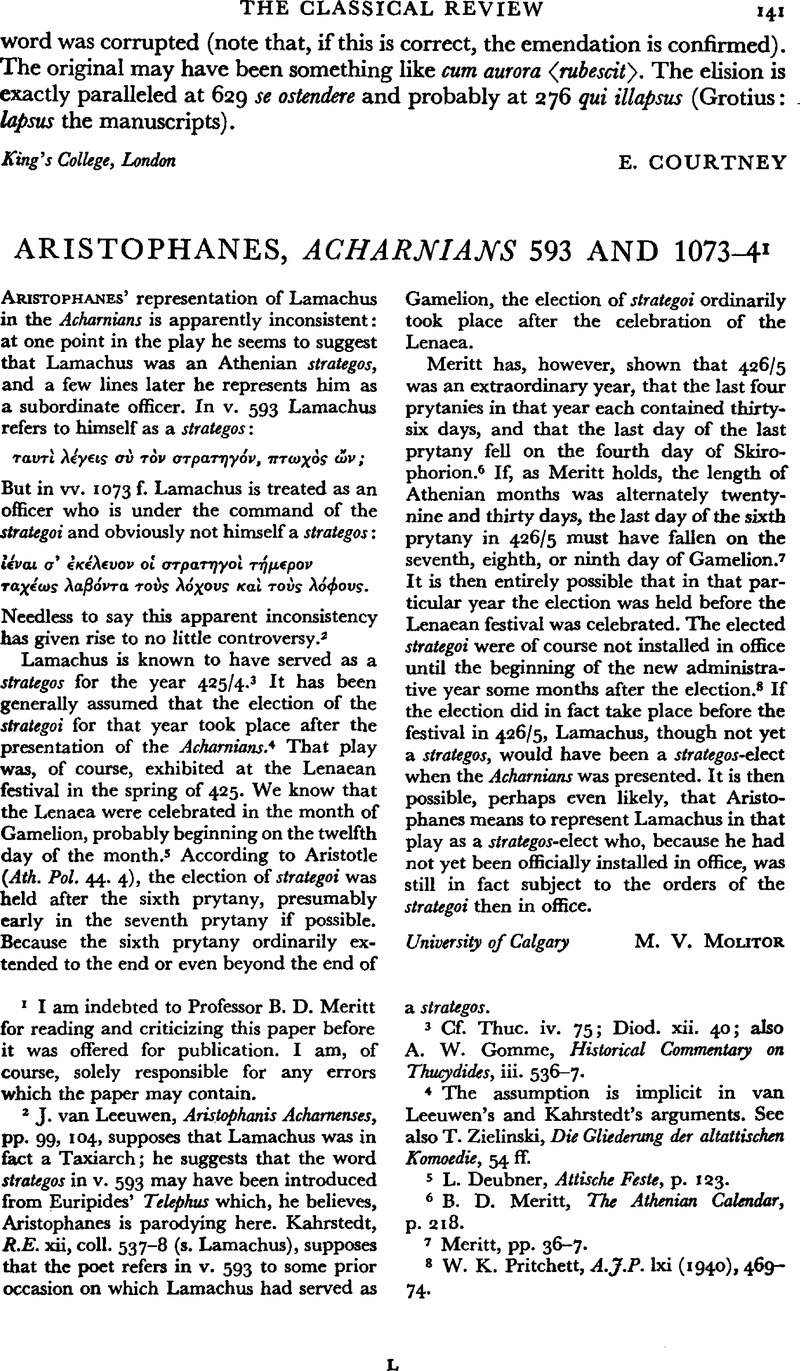No CrossRef data available.
Article contents
Aristophanes, Acharnians 593 and 1073–41
Published online by Cambridge University Press: 27 February 2009
Abstract

- Type
- Review Article
- Information
- Copyright
- Copyright © The Classical Association 1969
References
2 van Leeuwen, J., Aristophanis Achamenses, pp. 99, 104Google Scholar, supposes that Lamachus was in fact a Taxiarch; he suggests that the word strategos in v. 593 may have been introduced from Euripides' Telephus which, he believes, Aristophanes is parodying here. Kahrstedt, R.E. xii, coll. 537–8 (s. Lamachus), supposes that the poet refers in v. 593 to some prior occasion on which Lamachus had served as a strategos.
3 Cf. Thuc. iv. 75; Diod. xii. 40; also Gomme, A. W., Historical Commentary on Thucydides, iii. 536–537.Google Scholar
4 The assumption is implicit in van Leeuwen's and Kahrstedt's arguments. See also Zielinski, T., Die Gliederung der altattischen Komoedie, 54 ff.Google Scholar
5 Deubner, L., Attische Feste, p. 133.Google Scholar
6 Meritt, B. D., The Athenian Calendar, p. 218.Google Scholar
7 Meritt, pp. 36–7.
8 Pritchett, W. K., A.J.P. lxi (1940), 469–474.Google Scholar




